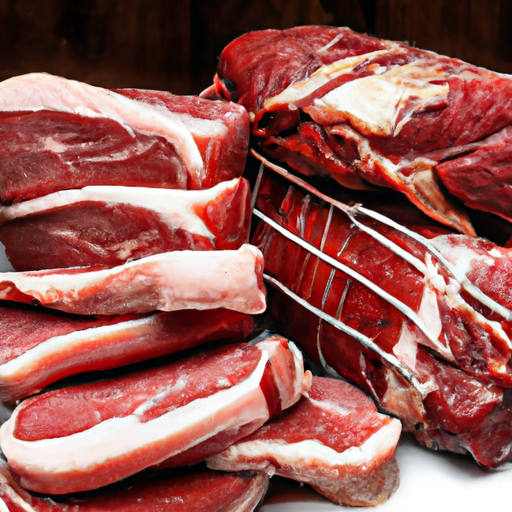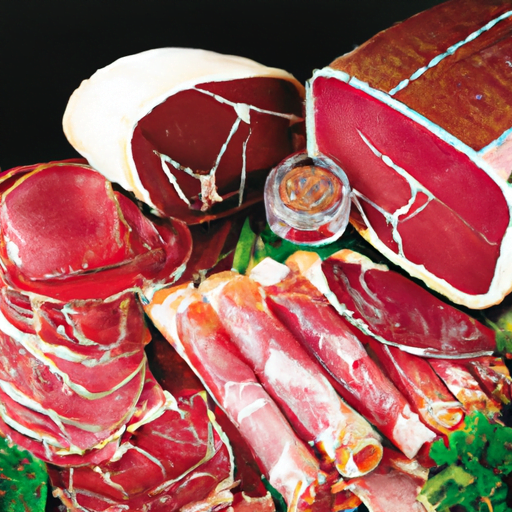So, you’ve decided to embrace the off-grid living lifestyle, huh? That’s fantastic! But let me ask you this. How are you planning to store your meat without a freezer? I bet you’re scratching your head right now, wondering if it’s even possible. Well, worry not my friend, because I’m here to tell you that it is indeed possible, and I’m about to share some creative ways to make it happen.
Now, when it comes to storing meat without a freezer, there are a few methods you can try. First up, there’s curing. This involves using salt or other curing agents to preserve the meat. Think of it like making your own homemade jerky. Not only does this method extend the shelf life of the meat, but it also adds a delicious flavor to it. I’ll dive into the details of this method in the article.
Another option you have is smoking. Ah, the sweet smell of smoked meat! By exposing the meat to low temperatures and wood smoke, you can effectively preserve it. This technique not only imparts a smoky flavor, but it also acts as a natural preservative, keeping your meat safe to eat for longer periods of time. Trust me, once you learn the art of smoking meat, you’ll never want to go back to plain old refrigeration.
And lastly, we have fermenting. Now, I know this might sound a bit strange, but hear me out. Fermenting meat is a traditional method that has been used for centuries to keep it edible for much longer. By creating a controlled environment with the right combination of salt, temperature, and time, you can successfully store your meat without a freezer. It might take a bit more effort and patience, but the results are definitely worth it.
So, there you have it! Three creative ways to store meat without a freezer. I hope I’ve piqued your interest and got you curious to learn more about these methods. Don’t worry, in the upcoming article, I’ll go into greater detail about each technique, providing you with step-by-step instructions and tips to make the most out of your off-grid meat storage. Until then, happy meat storing!

Creative Ways to Store Meat without a Freezer
Off-grid living presents unique challenges when it comes to storing meat. Without the luxury of a traditional freezer, individuals must get creative in order to preserve their meat and ensure a consistent supply of protein. Thankfully, there are several alternative methods for preserving meat that are both effective and sustainable. In this article, we will explore various techniques for storing meat without a freezer, including curing and smoking, dehydrating, using salt and brine solutions, packaging with wax or oil, utilizing fermentation techniques, and the concept of root cellars.
Alternative Methods for Preserving Meat
When living off the grid, it is important to explore alternative methods for preserving meat. One such method is the use of root cellars. These underground storage spaces provide cool, dark, and humid environments that are ideal for storing various types of food, including meat. By regulating the temperature and humidity levels, root cellars can extend the shelf life of meat without the need for refrigeration.
Another popular technique for preserving meat without a freezer is using lard. Lard acts as a natural preservative, creating a protective barrier that helps prevent spoilage. Simply coat the meat in a layer of lard, ensuring it is fully covered, and store it in a cool, dry place. The lard will keep out moisture and air, effectively preserving the meat for an extended period of time.
Creating meat jerky is another effective way to store meat without a freezer. Jerky is made by thinly slicing meat and then drying it to remove the moisture. The lack of moisture inhibits the growth of bacteria and other microorganisms, extending the shelf life of the meat. With proper preparation and storage, homemade jerky can last for months and provide a convenient source of protein.
Ceramic jars can also be used for meat preservation. These airtight containers provide a cool and dry environment, preventing spoilage. Simply pack the meat tightly into the jars and seal them with a lid. Store the jars in a cool, dark place, and the meat will stay fresh for an extended period of time.
Curing and Smoking Meat
Curing and smoking meat has been a traditional method of preservation for centuries. The process involves using salt, sugar, and other curing agents to draw out moisture and inhibit the growth of bacteria. The meat is then smoked, which adds flavor and further extends its shelf life.
There are two main methods of curing meat: dry curing and wet curing. Dry curing involves rubbing the meat with a mixture of salt, sugar, and other spices and allowing it to air dry. Wet curing, on the other hand, involves submerging the meat in a brine solution for a certain period of time. Both methods effectively preserve the meat, but dry curing typically requires more time and careful monitoring of temperature and humidity levels.
Smoking meat not only imparts a unique flavor, but it also acts as a form of preservation. The smoke helps to deter insects and other pests, while also inhibiting the growth of bacteria. There are various smoking methods to choose from, including hot smoking, cold smoking, and smoke roasting. Each method offers its own benefits and considerations, so it is important to choose the one that best suits your needs and available resources.
Dehydrating Meat
Dehydrating meat is a popular method of preservation that removes moisture and inhibits the growth of bacteria. There are two main ways to dehydrate meat: sun drying and using a dehydrator.
Sun drying involves slicing the meat into thin strips and placing it in direct sunlight. The heat and airflow help to remove the moisture, resulting in dried meat. However, this method can be time-consuming and is highly dependent on weather conditions.
Using a dehydrator is a more reliable and convenient method for dehydrating meat. The dehydrator uses a low, steady heat and airflow to slowly remove the moisture from the meat. This process preserves the flavor and nutrients, while also extending the shelf life of the meat. Once dehydrated, the meat can be stored in an airtight container or vacuum-sealed for long-term storage.
Using Salt and Brine Solutions
Salt has long been used as a preservative due to its ability to draw out moisture from food. When it comes to meat preservation, salt can be used in two ways: dry salting and creating brine solutions.
Dry salting involves rubbing salt onto the surface of the meat and allowing it to sit for a certain period of time. The salt draws out the moisture, creating an inhospitable environment for bacteria to grow. Once the meat has been thoroughly salted, it can be rinsed and stored in a cool, dry place.
Creating brine solutions is another effective way to preserve meat. A brine is a mixture of water, salt, sugar, and sometimes other spices or herbs. The meat is submerged in the brine solution for a period of time, allowing the salt to penetrate the meat and inhibit bacterial growth. Brining can also add flavor and tenderness to the meat, making it a popular choice for certain cuts.
Packaging with Wax or Oil
Using wax or oil to package and preserve meat is another creative method for off-grid living. Beeswax or vegetable wax can be melted down and brushed or poured over the surface of the meat. Once the wax hardens, it creates a protective barrier that helps prevent spoilage. This method is particularly useful for cuts of meat that have been vacuum-sealed or wrapped in butcher paper.
Encaustic wax preservation is a technique that involves completely immersing the meat in melted wax. This creates an airtight seal that keeps out moisture and bacteria, ensuring the meat stays fresh for an extended period of time. Although this method requires more wax and can be more time-consuming, it is highly effective for long-term preservation.
Applying oil to seal and preserve meat is a simple yet effective method. Coconut oil, olive oil, and other cooking oils can be used to coat the surface of the meat, creating a protective layer that helps prevent spoilage. This method works best for smaller cuts of meat and can be used in combination with other preservation techniques, such as curing and smoking.
Utilizing Fermentation Techniques
Fermentation is a natural process that can be utilized to preserve meat. By harnessing the power of bacteria, fermentation creates an acidic environment that inhibits the growth of harmful bacteria and extends the shelf life of meat. Lacto-fermentation is a popular method of meat preservation that involves submerging the meat in a brine solution and allowing beneficial bacteria to thrive.
It is important to note that caution must be exercised when fermenting meat, as improper fermentation can lead to foodborne illnesses. Proper hygiene and careful monitoring of temperature and pH levels are essential to ensure the safety and quality of the fermented meat.
The Concept of Root Cellars
Root cellars have been used for centuries as a means of food storage, including the preservation of meat. These underground storage spaces provide a cool, dark, and humid environment that helps extend the shelf life of various types of food.
Understanding the purpose of root cellars is essential when it comes to storing meat. The cool temperature helps slow down the growth of bacteria, while the high humidity prevents dehydration. By regulating these factors, root cellars can effectively preserve meat without the need for refrigeration.
Building and maintaining a root cellar requires careful planning and consideration. The location, insulation, and ventilation are all important factors that need to be taken into account. Additionally, proper organization and rotation of stored food is essential to ensure freshness and prevent spoilage. Storing meat in a root cellar involves keeping it in airtight containers or vacuum-sealed packages to protect it from moisture and pests.
Preserving Meat with Lard
Lard is an effective preservation agent that has been used for centuries. It acts as a natural barrier, sealing in moisture and preventing spoilage. Coating meat with lard provides a protective layer that keeps out air and bacteria, extending the shelf life of the meat.
To preserve meat with lard, simply melt the lard and pour it over the meat, ensuring that it is fully covered. The lard will solidify, creating a protective coating that helps to maintain the meat’s freshness. Proper storage of lard-preserved meat involves keeping it in a cool, dry place away from direct sunlight.
Conclusion
Exploring these creative methods for storing meat without a freezer allows individuals to adapt to off-grid living and ensure a consistent supply of protein. While each technique has its own advantages and considerations, the variety of options presented here allows for flexibility in finding the most suitable method based on available resources and personal preferences. Whether it’s curing and smoking, dehydrating, using salt and brine solutions, packaging with wax or oil, utilizing fermentation techniques, or utilizing root cellars, these methods offer sustainable and effective ways to store meat without the reliance on a freezer. With a little planning and preparation, you can confidently store meat and enjoy it at your convenience, no freezer required.





